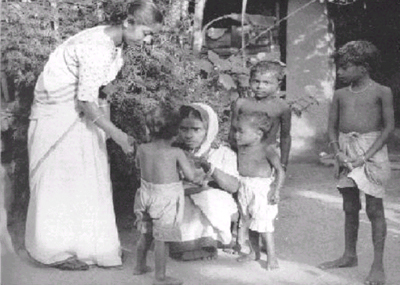| CHAPTER III - ILLNESS PERCEPTION & UTILIZATION OF HEALTH FACILITIES |
| 182 | ||
| AU | : | Radha Narayan, Susy Thomas, Srikantaramu N & Srikantan K |
| TI | : | Illness perception and medical relief in rural communities. |
| SO | : | INDIAN J TB 1982, 29, 98-103. |
| DT | : | Per |
| AB | : |
Illness is mostly a subjective awareness of an individual, the relief of which may be sought within or outside medical or health facilities. Perception of illness vary from people to people depending upon cultural, ethnic and socio-economic differences. Perception of symptoms by persons suffering from TB is very high yet only half of them approach modern medical facility for alleviation of their suffering. A survey was carried out in rural area of Hoskote taluk, Bangalore district to determine perceived morbidity and accessible medical relief in 1433 households belonging to 18 villages; of them, 1393 (97%) were successfully interviewed. Selected households belonged to three types of villages i.e., those being within 3 kms of a i) PHC, ii) taluk headquarters hospital and iii) non governmental health centre. Of the 9286 individuals belonging to 1393 households satisfactorily interviewed regarding health, 1201 (12.9%) were found to be ill at some point of time during the reference period of one month. No differences were observed in the perception of morbidity or in the health seeking behaviour in the three groups of villages. Persons with symptoms/disease accounted for 88.8% of the total sickness, 3.4% for injuries and 9.3% for disabilities, while action taking was 61.6%, 90% and 13.5% respectively. Age sex distribution showed no difference in illness occurrence. Sputum was collected from 147 chest symptomatics and seven were found to be sputum positive. Government health facilities were utilized by 37.6% of the sick persons, private doctors by 36.4%, nature medicine by 10.6% and home remedies by only 9.9%. In conclusion, the services at the government health facilities were acceptable and were utilized if accessible. Prompt and adequate relief for injuries and acute indispositions ensures confidence of the people and better utilization. |
| KEYWORDS: SOCIAL AWARENESS; SOCIAL MEDICINE; INDIA. | ||
 Health Visitor at Work |
||